Spring break is almost here! It doesn’t feel much like spring in Bloomington, but the daily highs are supposed to be in the 40s this weekend, so there’s hope! Ames Library will be open limited hours during spring break. Learn all about our spring break hours and normal semester hours on our webpage!
Tuesday, Beckman Auditorium, 4pm – Indians Writing Latin: Native Americans and Classical Learning in Colonial New 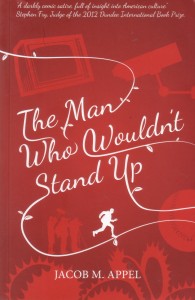 England – Craig Williams, professor of Classics at University of Illinois – Urbana-Champaign, will present a lecture on Native Americans and Latin. The event is free and open to anyone interested. There will be light refreshments for everyone to enjoy. Sponsor: Greek and Roman Studies
England – Craig Williams, professor of Classics at University of Illinois – Urbana-Champaign, will present a lecture on Native Americans and Latin. The event is free and open to anyone interested. There will be light refreshments for everyone to enjoy. Sponsor: Greek and Roman Studies
Thursday, Beckman Auditorium, 4pm – Author Jacob Appel will read from his fiction. He is the author of six literary works, including the novel The Man Who Wouldn’t Stand Up and the story collection Scouting for the Reaper.
Instruction Lab, Room 129
- Monday, 2pm – Prof. Lessen’s Gateway
- Tuesday, 4:30pm – Nursing 460
- Wednesday, 11am – Help@Ames Meeting
- Thursday, 9:30am – English 280
- Thursday, 2:30pm – Nursing 460
- Friday, 2:00pm – Hispanic Studies 280
Beckman Auditorium, Lower Level
- Tuesday, 8:00am – Nursing 460
- Tuesday, 9:30am – American Studies/History 150
- Tuesday, 2:30pm – Humanities 103
- Tuesday, 4:00pm – Ides of March Performance and Lecture Series
- Tuesday, 7pm – LC 116 Film Showing
- Wednesday, 11am – National Society of Leadership and Success Speaker Broadcast
- Wednesday, 1:30pm – Technology Training for Beckman equipment
- Wednesday, 8:00pm – National Society of Leadership and Success Speaker Broadcast
- Thursday, 8:00am – Nursing 460
- Thursday, 9:30am – American Studies/History 150
- Thursday, 3:30pm – Jacob Appel Reading
- Thursday, 7:00pm – International Film Series
Meeting Room 214, 2nd Floor
- Monday, 9:30am – Network Meeting
- Monday, 10:30am – Disaster Recovery Meeting
- Tuesday, 10:00am – Library Public Services Meeting
- Tuesday, 1:00pm – Assessment Committee Meeting
- Tuesday, 4:30pm – Star Literacy
- Wednesday, 9:30am – Star Literacy
- Wednesday, 11:30am – Theatre Recruitment Meeting
- Wednesday, 2:00pm – CUPP
- Thursday, 1:00pm – CUPP
- Thursday, 4:30pm – Star Literacy
- Friday, 2:00pm – Portal Meeting
 “On this day in 1904, Theodor Geisel, better known to the world as Dr. Seuss, the author and illustrator of such beloved children’s books as “The Cat in the Hat” and “Green Eggs and Ham,” is born in Springfield, Massachusetts. Geisel, who used his middle name (which was also his mother’s maiden name) as his pen name, wrote 48 books–including some for adults–that have sold well over 200 million copies and been translated into multiple languages. Dr. Seuss books are known for their whimsical rhymes and quirky characters, which have names like the Lorax and the Sneetches and live in places like Hooterville.
“On this day in 1904, Theodor Geisel, better known to the world as Dr. Seuss, the author and illustrator of such beloved children’s books as “The Cat in the Hat” and “Green Eggs and Ham,” is born in Springfield, Massachusetts. Geisel, who used his middle name (which was also his mother’s maiden name) as his pen name, wrote 48 books–including some for adults–that have sold well over 200 million copies and been translated into multiple languages. Dr. Seuss books are known for their whimsical rhymes and quirky characters, which have names like the Lorax and the Sneetches and live in places like Hooterville.
Geisel, who was born on March 2, 1904, in Springfield, Massachusetts, graduated from Dartmouth College, where he was editor of the school’s humor magazine, and studied at Oxford University. There he met Helen Palmer, his first wife and the person who encouraged him to become a professional illustrator. Back in America, Geisel worked as a cartoonist for a variety of magazines and in advertising.
The first children’s book that Geisel wrote and illustrated, “And to Think That I Saw It On Mulberry Street,” was rejected by over two dozen publishers before making it into print in 1937. Geisel’s first bestseller, “The Cat in the Hat,” was published in 1957. The story of a mischievous cat in a tall striped hat came about after his publisher asked him to produce a book using 220 new-reader vocabulary words that could serve as an entertaining alternative to the school reading primers children found boring.
Other Dr. Seuss classics include “Yertle the Turtle,” “If I Ran the Circus,” “Fox in Socks” and “One Fish, Two Fish, Red Fish, Blue Fish.”
Some Dr. Seuss books tackled serious themes. “The Butter Battle Book” (1984) was about the arms buildup and nuclear war threat during Ronald Reagan’s presidency. “Lorax” (1971) dealt with the environment.
Many Dr. Seuss books have been adapted for television and film, including “How the Grinch Stole Christmas!” and “Horton Hears a Who!” In 1990, Geisel published a book for adults titled “Oh, the Places You’ll Go” that became a hugely popular graduation gift for high school and college students.
Geisel, who lived and worked in an old observatory in La Jolla, California, known as “The Tower,” died September 24, 1991, at age 87.”

![IMG_20150227_075307[1]](https://blogs.iwu.edu/library/files/2015/02/IMG_20150227_0753071-1024x584.jpg)

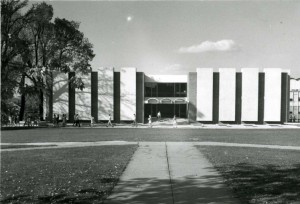

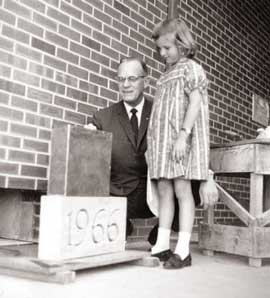


![IMG_20150224_111816[1]](https://blogs.iwu.edu/library/files/2015/02/IMG_20150224_1118161-1024x576.jpg)

![IMG_20150223_074448[1]](https://blogs.iwu.edu/library/files/2015/02/IMG_20150223_0744481-1024x584.jpg)
![IMG_20150223_074518[1]](https://blogs.iwu.edu/library/files/2015/02/IMG_20150223_0745181-171x300.jpg) , those tiles were major tripping hazards, so Physical Plant has done what they can in the subzero temperatures, but we’ll have to wait for warmer weather in order to fix the base problem. In the meantime, have caution when approaching the library – knowledge is contagious.
, those tiles were major tripping hazards, so Physical Plant has done what they can in the subzero temperatures, but we’ll have to wait for warmer weather in order to fix the base problem. In the meantime, have caution when approaching the library – knowledge is contagious.![IMG_20150113_130321[1]](https://blogs.iwu.edu/library/files/2015/02/IMG_20150113_1303211-1024x584.jpg)
 health care records, connect with others, and build businesses. But the one trillion dollar mobile industry is still relatively young. Leaders in both the public and private sectors need to figure out how to apply mobile technologies or mobile devices to optimize education, health care, public safety, disaster preparedness, and economic development. And the ever-expanding mobile frontier presents new challenges to law, policy, and regulations and introduces new tensions; one person’s idea of cautious deliberation can be another’s idea of a barrier to innovation.
health care records, connect with others, and build businesses. But the one trillion dollar mobile industry is still relatively young. Leaders in both the public and private sectors need to figure out how to apply mobile technologies or mobile devices to optimize education, health care, public safety, disaster preparedness, and economic development. And the ever-expanding mobile frontier presents new challenges to law, policy, and regulations and introduces new tensions; one person’s idea of cautious deliberation can be another’s idea of a barrier to innovation.
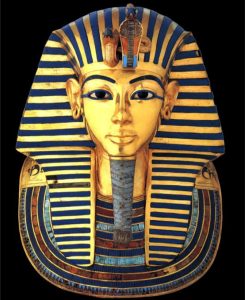
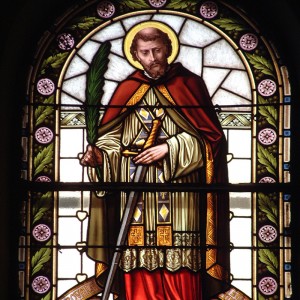 Claudius banned all marriages and engagements in Rome. Valentine, realizing the injustice of the decree, defied Claudius and continued to perform marriages for young lovers in secret.
Claudius banned all marriages and engagements in Rome. Valentine, realizing the injustice of the decree, defied Claudius and continued to perform marriages for young lovers in secret.